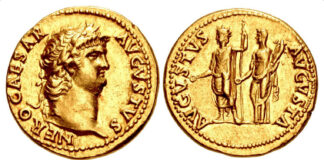
770 coins from Mysia are part of the Plankenhorn Collection. 770 coins, that’s forty more than those included in the famous von Aulock Collection. Therefore, the collection recently published by the State Coin Collection in Munich is a very important one.
Collector, Autodidact and Author
Anyone interested in the coins of Asia Minor is familiar with the name of Gerhard Plankenhorn. After all, he has been collecting coins from the whole of Asia Minor with great personal commitment for several decades and is always happy to make his material available for scholarly publications. The author of this review was already allowed to use pieces from the Plankenhorn Collection for her long-ago dissertation.
Gerhard Plankenhorn (*1941) studied Latin, history and social studies to teach these subjects to his students as a high school teacher for 39 years. He discovered his passion for numismatics as early as during his studies. And with his teacher’s salary, he managed to build up a collection that can definitely be compared to famous ensembles such as the Hans von Aulock Collection when it comes to extent and variety. Gerhard Plankenhorn is considered a great expert on the subject who, as an autodidact, acquired the knowledge that was necessary to scholarly catalogue the pieces himself. He is the author of this catalogue on his coins from Mysia, while Josef Stauber, scholar and since 2005 also a high school teacher, wrote the historical introductions for the various places where the pieces were minted.
A Catalogue Following the Tradition of the Sylloge Volumes
If you’d like to know what the catalogue looks like, think of the long-established Sylloge Nummorum Graecorum volumes, adapted to modern visual and reading habits. This means, the book is in DIN A4 format and not in the impractical Sylloge format. Plankenhorn presents a coin’s description alongside its picture but does not use the layout to show the larger-scale images together with the depiction – they are instead displayed on the last pages. The descriptions meet scholarly standards. Quotations refer to the coin type not to the individual die.
The pictures, well, let’s keep it friendly: they leave some room for improvement for the next volume. Even with excellent eyes (and, unfortunately, the author of this review hasn’t had those for a long time), the details of the tiny coins of poor quality – as there are so many from Mysia – cannot be acknowledged. Of course, anyone who deals with the matter knows that especially these small bronze coins are particularly demanding for a photographer. And at this point, apparently, something went wrong.
Either way, collectors and dealers will appreciate the volume mainly for its detailed introduction to each city, summarizing the most important geographical, historical and numismatic details alongside current literature.
The Collector’s Importance for Research
One thing must certainly be said at this point: without the collector Gerhard Plankenhorn, this collection would not exist – and neither would this useful catalogue, which he not only wrote but also financed. Dietrich O. A. Klose, former senior collection director at the State Coin Collection in Munich paid tribute to Gerhard Plankenhorn on behalf of all collectors: “Especially in the field of numismatics, private collecting is of utmost importance to scholars. Several private collections constituted the beginning of public collections or enriched such a collection considerably: and especially in numismatics there have been important collectors who, due to their expertise, became scholarly researchers themselves. With the landscape of Mysia, this book presents the first part of such an excellent private collection of ancient coins from Asia Minor from the archaic era to the Roman Empire. This collection, built up over many decades, proves to be one of the most important of its kind.”
To sum up: those who want to identify their coins will certainly be very happy with this catalogue. Collectors in particular will highly appreciate the detailed texts on the individual places where coins were minted. All of us can look forward to hopefully many volumes that are to come. And the author of this review will be very excited to then be able to praise the quality of the illustrations.
The book can be purchased from the Habelt publishing house.
We presented Gerhard Plankenhorn in detail in our Collectors’ Who’s Who.




